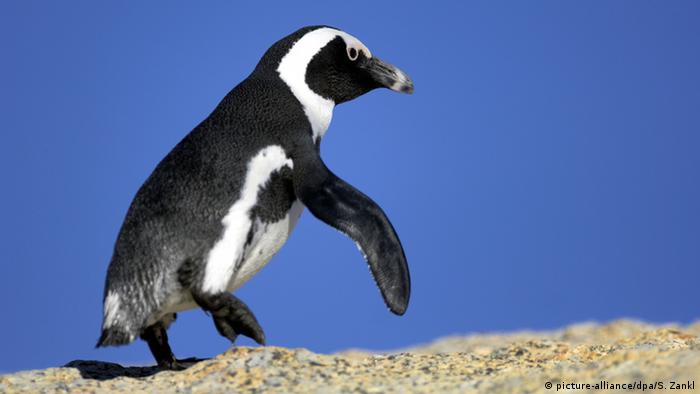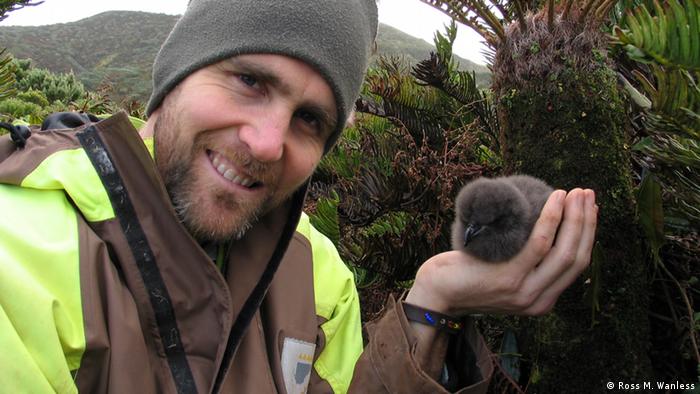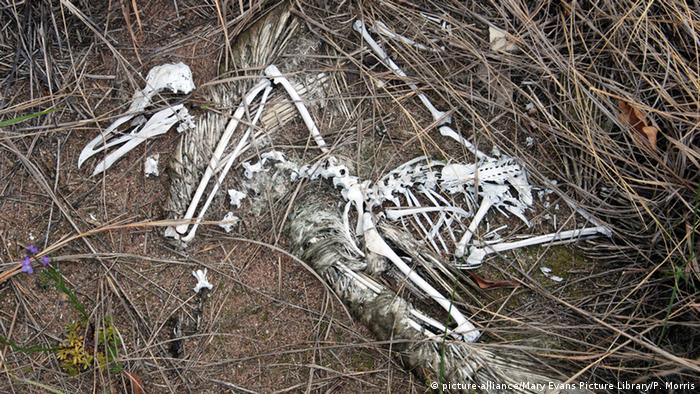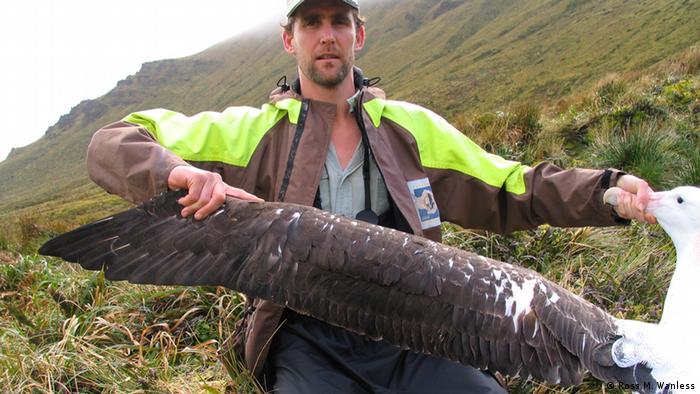- November 23, 2015
- Source:
- American Physical Society's Division of Fluid Dynamics
- Summary:
- Antarctic penguins live in a bitterly cold place, where the air temperature can drop to -40 degrees Celsius and the winds can hurtle at speeds of 40 meters per second. Although these birds routinely hop in and out of the water in sub-freezing temperatures, they manage to keep ice from coating their feathers. Now researchers have examined penguin feathers in extreme detail and think they know the penguins' anti-icing trick: a combination of nanostructures and a special oil make Antarctic penguin feathers ultra-water-repelling, or superhydrophobic.

Diving penguins (Antarctica).
Credit: © alekseev / Fotolia
Antarctic penguins live in a bitterly
cold place, where the air temperature can drop to -40 degrees Celsius
and the winds can hurtle at speeds of 40 meters per second. Although
these birds routinely hop in and out of the water in sub-freezing
temperatures, they manage to keep ice from coating their feathers.
Now researchers have examined penguin feathers in extreme detail and
think they know the penguins' anti-icing trick: a combination of
nanostructures and a special oil make Antarctic penguin feathers
ultra-water-repelling, or superhydrophobic. Droplets of water on the
feathers bead up so much that's it's difficult for heat to flow out of
the droplet, and the water will roll off before it has time to freeze.
The researchers will present their findings at the annual meeting of the American Physical Society's Division of Fluid Dynamics, held Nov. 22-24 in Boston, Mass.
Pirouz Kavehpour, a professor in the Department of Mechanical and Aerospace Engineering at UCLA, first got interested in penguin feathers while watching a nature documentary on the famous black and white birds. "I noticed the penguins were coming out of very cold water, and sitting in very cold temperatures, and it was curious that no ice formed on their feathers," he said.
Kavehpour got in touch with Judy St. Leger, a world expert on penguins, who confirmed that indeed no one had ever observed ice on the feather coat of healthy penguins. To find out what the penguins' anti-icing secret was, the two scientists and their colleagues studied penguin feathers, donated by San Diego SeaWorld, using Scanning Electron Microscopy.
They discovered that the feathers had tiny pores that trap air and make the surface hydrophobic. In addition, the penguins apply an oil, which is produced by a gland near the base of their tail, to their feathers. The combination of the nano-sized pits and the preen oil makes the feathers superhydrophobic.
On superhydrophobic surfaces, water droplets bead up and sit on the surface almost like spheres. Kavehpour and his colleagues propose that it's the sphere-like geometry that delays ice formation, since heat has a hard time flowing out of the water droplet if the droplet does not make much contact with the surface.
"Heat flow could be compared to traffic. If you have a freeway that turns into a tiny, two-lane road, the traffic will back up. Similarly, heat does not flow well from the large cross-section of the middle of the drop to the small cross-section where the drop makes contact with the feather," Kavehpour said.
The scientists looked most extensively at the feathers of the gentoo penguin, which lives in Antarctica and the southern-most parts of South America. They also compared the gentoo feathers to feathers from the Magellanic penguin, which lives in warmer climates farther north in Chile, Argentina and even Brazil. They found that the warmer weather penguins lacked the small pores on their feathers, and that the birds also produced a different type of preen oil that was not as hydrophobic.
Penguin's anti-icing solutions could help humans solve some of our own problems with ice. For example, ice on an airplane's wings, flaps and rudder can alter the aerodynamic properties of the plane and even cause it to crash. Airlines spend lots of time and money applying chemical de-icers to planes that fly in winter weather. Superhydrophobic surfaces inspired by penguins might be cheaper, longer-lasting and more environmentally friendly.
"It's a little ironic that a bird that doesn't fly could one day help airplane fly more safely," Kavehpour said.
The researchers will present their findings at the annual meeting of the American Physical Society's Division of Fluid Dynamics, held Nov. 22-24 in Boston, Mass.
Pirouz Kavehpour, a professor in the Department of Mechanical and Aerospace Engineering at UCLA, first got interested in penguin feathers while watching a nature documentary on the famous black and white birds. "I noticed the penguins were coming out of very cold water, and sitting in very cold temperatures, and it was curious that no ice formed on their feathers," he said.
Kavehpour got in touch with Judy St. Leger, a world expert on penguins, who confirmed that indeed no one had ever observed ice on the feather coat of healthy penguins. To find out what the penguins' anti-icing secret was, the two scientists and their colleagues studied penguin feathers, donated by San Diego SeaWorld, using Scanning Electron Microscopy.
They discovered that the feathers had tiny pores that trap air and make the surface hydrophobic. In addition, the penguins apply an oil, which is produced by a gland near the base of their tail, to their feathers. The combination of the nano-sized pits and the preen oil makes the feathers superhydrophobic.
On superhydrophobic surfaces, water droplets bead up and sit on the surface almost like spheres. Kavehpour and his colleagues propose that it's the sphere-like geometry that delays ice formation, since heat has a hard time flowing out of the water droplet if the droplet does not make much contact with the surface.
"Heat flow could be compared to traffic. If you have a freeway that turns into a tiny, two-lane road, the traffic will back up. Similarly, heat does not flow well from the large cross-section of the middle of the drop to the small cross-section where the drop makes contact with the feather," Kavehpour said.
The scientists looked most extensively at the feathers of the gentoo penguin, which lives in Antarctica and the southern-most parts of South America. They also compared the gentoo feathers to feathers from the Magellanic penguin, which lives in warmer climates farther north in Chile, Argentina and even Brazil. They found that the warmer weather penguins lacked the small pores on their feathers, and that the birds also produced a different type of preen oil that was not as hydrophobic.
Penguin's anti-icing solutions could help humans solve some of our own problems with ice. For example, ice on an airplane's wings, flaps and rudder can alter the aerodynamic properties of the plane and even cause it to crash. Airlines spend lots of time and money applying chemical de-icers to planes that fly in winter weather. Superhydrophobic surfaces inspired by penguins might be cheaper, longer-lasting and more environmentally friendly.
"It's a little ironic that a bird that doesn't fly could one day help airplane fly more safely," Kavehpour said.
Story Source:
The above post is reprinted from materials provided by American Physical Society's Division of Fluid Dynamics. Note: Materials may be edited for content and length.
The above post is reprinted from materials provided by American Physical Society's Division of Fluid Dynamics. Note: Materials may be edited for content and length.
American
Physical Society's Division of Fluid Dynamics. "The anti-icing tricks
of penguins." ScienceDaily. ScienceDaily, 23 November 2015.
<www.sciencedaily.com/releases/2015/11/151123103844.htm>.
























